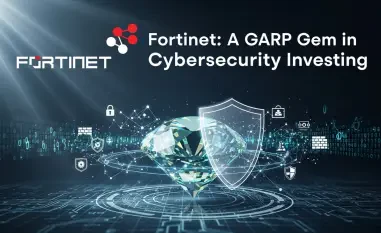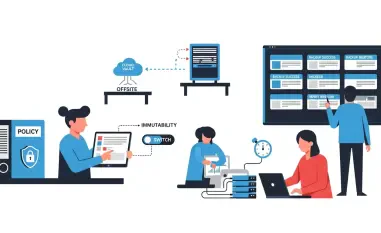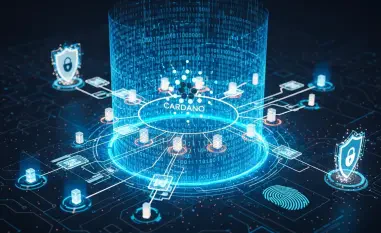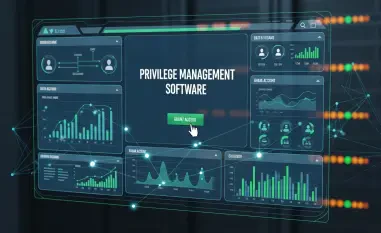In the ever-evolving landscape of cybersecurity, Malik Haidar stands out as a formidable expert. With considerable experience in thwarting attacks against multinational corporations, Malik’s insights are invaluable for businesses looking to beef up their security posture. He specializes in merging business needs with cybersecurity strategies, a crucial perspective in today’s digital world. Today, Malik shares his thoughts on the cunning use of help desk scams and offers insights into how organizations can defend against identity-focused threats.
Can you explain in simple terms what help desk scams are and how attackers use them to gain access to user accounts?
Help desk scams are a form of social engineering where attackers trick help desk operators into resetting credentials or MFA for user accounts. The goal is to gain unauthorized access by impersonating legitimate users, often using some piece of personal information like PII or passwords to establish credibility.
How do the social engineering tactics employed in help desk scams manipulate help desk operators into resetting credentials?
Attackers often present convincing narratives, combined with a calm and collected demeanor, to manipulate help desk operators. They might claim to have a new phone or a change in personal details, prompting operators to reset credentials or bypass security measures without suspicion.
What role does impersonation, using PII or passwords, play in the effectiveness of these scams?
Impersonation is central to the scam’s success. Attackers leverage pieces of personal information, like passwords or PII, to establish trust and authenticity in their requests, making help desk operators more likely to comply without verification.
Why are attackers specifically targeting accounts with admin privileges in help desk scams?
Admin accounts provide broad access across systems, often without the need for further privilege escalation. Once attackers have control, they can easily move laterally, access sensitive data, and escalate their attacks without overcoming additional security barriers.
How did the help desk scams used in the M&S and Co-op attacks demonstrate the vulnerabilities in help desk processes?
The attacks on M&S and Co-op showed how easily help desk processes could be exploited when operators are inadequately trained or when verification steps are insufficient. They highlighted the need for enhanced checks and rigorous verification to protect against such social engineering tactics.
Could you provide examples of notable help desk scams, such as those involving Caesars and MGM Resorts?
Certainly. At Caesars, attackers impersonated IT users to reset credentials and gained access to a database, securing a hefty ransom. MGM Resorts saw attackers use LinkedIn information for impersonation, resulting in a massive data theft and operational disruption. These cases underline the effectiveness and impact of help desk scams.
How do established processes in help desks contribute to their susceptibility to scams?
Help desks often operate under pressure to resolve issues quickly, which can lead to overlooking procedural verification steps. Standardized processes, aimed at efficiency, might not account for the nuances needed in identifying and verifying fraudulent activity.
What are some potential “gotchas” or pitfalls in securing help desk processes against scams?
One major pitfall is over-reliance on processes that can be easily fooled by SIM swapping or voice deepfakes. Moreover, training help desk staff to recognize subtle signs of social engineering and maintaining a healthy level of skepticism in unusual situations is often overlooked.
Why is it important for organizations to introduce friction into their help desk processes, and what does that entail?
Introducing friction means adding extra layers of verification when resetting high-risk credentials. This could be multi-party approvals or in-person verification. Such friction helps pause potentially risky requests, reducing the likelihood of successful social engineering attacks.
In what ways can multi-party approval and in-person verification help mitigate risks in help desk operations?
Multi-party approval ensures that more than one set of eyes evaluates the legitimacy of the request, and in-person verification can confirm a user’s identity more robustly, making it harder for attackers to succeed without physical presence and additional resources.
How have techniques like vishing and SIM swapping evolved in the toolkit of Scattered Spider?
Vishing, or voice phishing, continues to be refined where attackers directly call victims, persuading them into revealing MFA codes. SIM swapping evolves by exploiting telecom carrier processes to hijack numbers, bypassing SMS-based MFAs, exposing accounts to risk if sole reliance is placed on these methods.
What are AiTM phishing kits, and why have they become popular among threat actors like Scattered Spider?
AiTM (Adversary-in-the-Middle) phishing kits help attackers intercept data between users and platforms, stealing credentials and session tokens. Their popularity stems from their ability to bypass traditional MFA, making them an attractive tool for threat actors seeking reliable tactics.
How does Scattered Spider consciously evade established security controls in their attacks?
They focus on identity-based attacks, bypassing endpoint and network controls to access cloud services with lesser monitoring. They adapt quickly, modifying their tactics to avoid detection, such as tampering with audit logs without raising alarms, making traditional defenses inadequate.
Why is it critical for organizations to focus on the broader identity attack surface beyond just help desk scams?
Broader identity attack surfaces mean looking beyond typical scams. As attackers evolve, relying solely on past defenses leaves gaps. Identity involves understanding and securing all touchpoints, from applications to cloud services, where credentials and access can be compromised.
How can organizations enhance their security posture to defend against identity-focused threat actors like Scattered Spider?
Organizations need comprehensive strategies, utilizing advanced identity management tools, enforcing stricter MFA implementations, and ensuring robust SSO coverage. Employee training and awareness are pivotal in recognizing potential threats and maintaining vigilance against evolving tactics.
Can you discuss the importance of monitoring cloud services and avoiding tampering with cloud logs in preventing attacks?
Monitoring cloud services is vital as they often lack the visibility of on-prem environments. Attacks might go unnoticed when logs are tampered with. Consistent monitoring and integrity checks can ensure that suspicious activities are flagged, and logs provide accurate forensic evidence.
What steps does Push Security recommend to detect and respond to identity attacks effectively?
Push Security emphasizes proactive detection through constant monitoring of identity activities and vulnerabilities. They advocate for addressing SSO gaps, enhancing password policies, and using tools to uncover hidden weak spots in identity management systems, ensuring a rapid response to threats.
How does Push Security help organizations identify and rectify identity vulnerabilities in their applications?
Push Security analyzes applications to reveal vulnerabilities like weak passwords, unused app access, and insufficient MFA coverage. By rectifying these issues before they’re exploited, organizations can close critical security gaps that threat actors like Scattered Spider target.
Could you explain the significance of addressing MFA gaps and strengthening SSO coverage in an organization’s security strategy?
MFA and SSO are frontline defenses in identity security. Gaps in these areas create entry points for attackers. Strengthening these aspects ensures that even if credentials are stolen, additional layers prevent unauthorized access, mitigating potential breaches significantly.
How can businesses benefit from learning more about Scattered Spider’s tactics through resources such as webinars or live demos?
Webinars and live demos offer businesses valuable insights into real-world attack strategies and how they can fortify their defenses. Understanding Scattered Spider’s methods allows organizations to anticipate and outmaneuver such threats, effectively reducing vulnerabilities and strengthening overall security posture.













